As a professional...
Comment: Metal Box Tin Can Manufacturing Technology
Since the British Peter Durand invented tin cans in 1810 and was granted a British patent, the canning industry has a history of 170 years. As a packaging container for canned food, tin cans have long occupied an absolute advantage in the canning industry. In 1896, American Ams invented liquid rubber for can sealing and created a three-piece solder can with a double crimp structure. This is a significant reform in the history of tin can manufacturing. Tinplate (tinned sheet) has good welding properties, so it has a wide range of uses. Especially the continuous development of tinplate and its manufacturing technology is the main reason why tin cans have been used until now.
The development of the tin can manufacturing industry focuses on the specialization of manufacturing, the improvement of tinplate manufacturing technology and the continuous improvement and efficiency of production technology. The development of tinplate manufacturing technology with great economic significance is its low plating and high toughness. Changing from hot dip iron to electroplated iron greatly reduces the amount of tin plating. On the other hand, the situation in the past 30 years shows that although the output of tinned sheets in the world has been increasing as a whole, the average percentage of tin plating has been decreasing. It is expected that low plating will still be a trend for tinned sheets in the future. Due to the development of steel manufacturing technologies such as continuous annealing and quenched and tempered rolling, the toughness of the tin-plated sheet has been improved, and the average thickness of the tin-plated sheet has also become thinner. If compared with the empty cans of the same specification, the tin consumption of the empty tins is only 20% of that in 1945, and the iron consumption is only 65% of the time. It can be seen that the metal materials used in the production of tin cans are greatly saved. . In order to adapt to the changes in tinned sheets, the use of various internal coatings has been increased; at the same time, the shape and structure of the empty cans have also been improved, and new manufacturing techniques such as can body rolling and can neck necking have been adopted.
The following details the six key technologies involved in the manufacturing process of tin cans.
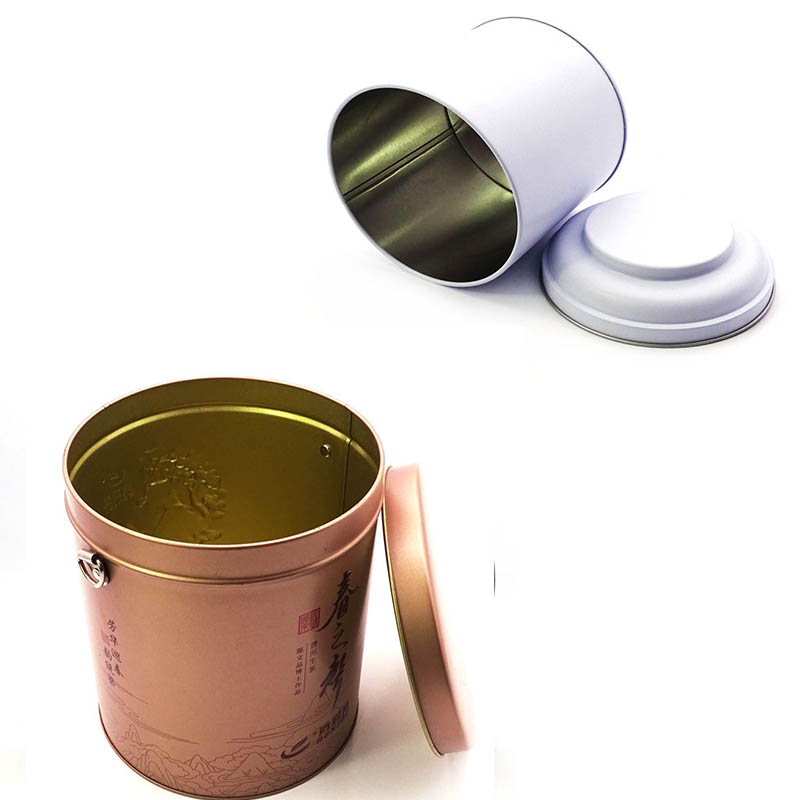
After the three-piece tin can body is welded, the weld seam must be repainted. In the past, liquid recoating was generally used, the process was more complicated and the quality was not easy to guarantee. Now the powder spraying process is increasingly used in the production of three-piece beverage cans, food cans, and aerosol cans. Since the powder sprayed coating is thicker than the liquid coating, the powder coating process can more effectively prevent the corrosion of the weld. At present, there are at least 800 can-making production lines in the world that use the technology of powder coating the inside of the weld.
The real application of the powder coating process in the tin can manufacturing industry is the repair of the can coating and the coating of the welding seam of the three-piece can. A large number of scientific experiments have proved that the powder coating has an ideal coating effect on packaging, and can be used for canning a variety of food, beer, beverages and aerosols.
Because the powder coating is a 100% solid coating, it meets the requirements of governments at all levels to reduce or prohibit the use of solvent-based coatings. It is one of the effective methods to prevent the volatilization of organic compounds in the tin can surface treatment process.
In terms of environmental protection, powder-coated can bodies are beneficial to tin can companies and food companies. In order to meet the increasing demands of customers for tin can packaging, food companies have been seeking distinctive and innovative solutions. This kind of food canned container not only meets environmental protection and safety requirements, but also is easy to produce, and is very popular in the market.
At present, the powder electrostatic spraying equipment used for three-piece can body welding seam repair is equipped with a full-process automatic control system and recovery and recycling device. The surplus powder coating during the spraying process can be completely recycled into the recycling device to be recovered, adjusted and reused, reducing the waste of materials and the generation of solid waste. The resulting clean, high-gloss surface makes the food preservation quality of the tin can container more excellent, hygienic, and the appearance is more eye-catching.
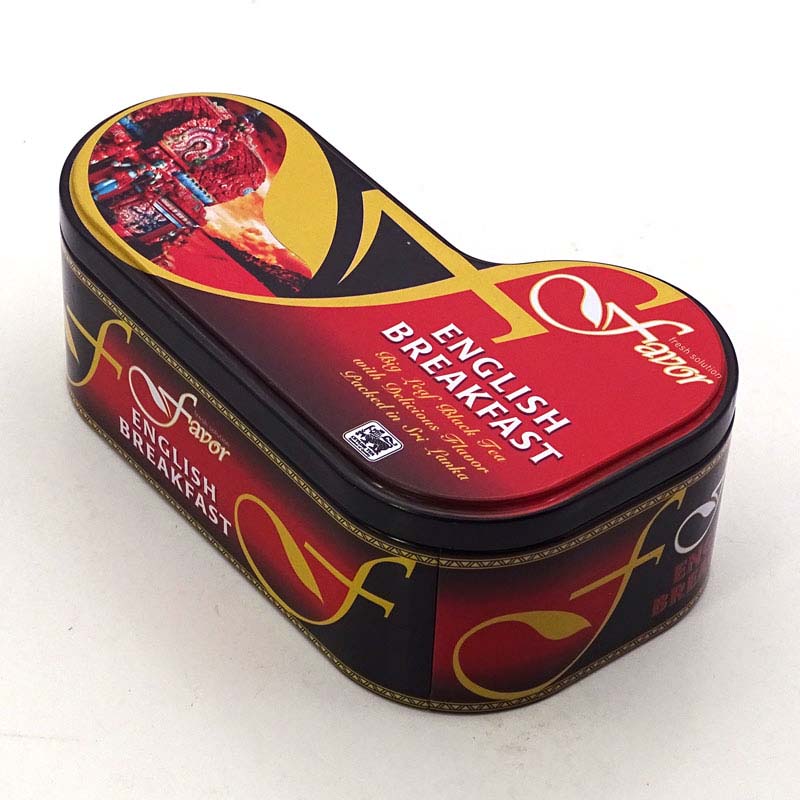
Tin can reduction technology
If metal packaging companies want to be in the forefront of the industry, in addition to the support of funds and resources, they should also rely on technological progress to effectively use resources and continuously reduce the resource and energy consumption of the company's unit output value to gain long-term competitive advantages and industry status.
The application of DR materials (secondary cold rolled tin plate, chrome plate) in three-piece tin cans is a technological innovation in the metal container industry. For a long time, one-time cold rolled iron three-piece tin cans with a thickness of 0.20mm have occupied most of the beverage can and food can market. With the development of technology, it is bound to require a new packaging model and advanced manufacturing technology to replace it. Although the application of one-time cold-rolled iron to three-piece tin cans has formed a complete set of technical processes in the world, under the two major constraints of energy and market competition, the market development trend of material thinning and volume reduction.
The thinning of raw materials for tin cans has injected momentum into the metal container industry from a cost and energy perspective. With the change of people's consumption concept, packaging is destined to be given the characteristics of humanization and light weight. In recent years, metal containers have developed rapidly, and their application areas have gradually expanded. Competition among metal can manufacturing companies has become increasingly fierce. Product differentiation and cost optimization have become imminent. The application of DR materials to the research of three-piece tin cans is a systematic research project, involving the material characteristics of DR materials, three-piece cans processing and forming to client filling and storage, etc., which is the metal can industry from technology to cost The development concept of the material itself-not only can reduce the resources and energy consumption of the upstream steel manufacturing industry and the packaging cost of the downstream food and beverage industry from the material itself, but also will bring good economic benefits to the can making enterprises.
The research and promotion of DR (tinned iron) materials is a technological revolution in the metal container industry. The transformation of industrialized equipment based on information technology has reduced the sheet thickness of tin cans from 0.20mm to 0.14~0.15mm, effectively saving customers more than 20% of costs. According to previous research, a three-piece tin can of DR material with a thickness of 0.15mm or even 0.12mm is realized. The filling, sterilization and packaging performance tests of 0.15mm thick DR material (tin plated iron) beverage cans have also been completed; 0.12mm thick DR material (tin plated iron) has completed laboratory trial production in the field of food cans and beverage cans. DR material (tin-plated iron) is a new carrier for metal container packaging of three-piece tin cans, which greatly reduces the consumption of tinplate and iron ore and the energy consumption in the steel processing process. Based on the annual consumption of about 19 billion beverage cans in the international market, the use of 691# cans with a thickness of 0.20mm consumes about 2.28 million tons of steel. If the thickness is changed to 0.15mm, it will consume about 2.21 million tons of steel and save 70,000 tons of steel; If 0.12mm thick plates are fully promoted in the food and beverage metal container packaging industry, about 600,000 tons of tinplate can be saved every year.
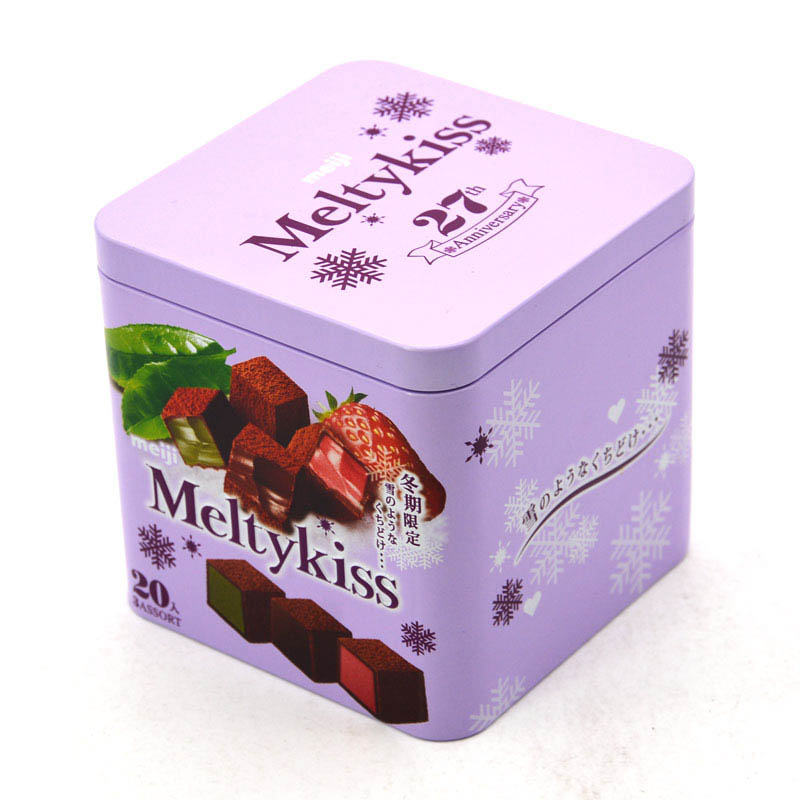
Tin cans use UV printing technology
UV printing refers to a technology that uses special inks to quickly form a large molecule, three-dimensional, mesh-like ink layer with stable physical and chemical properties and high surface brightness under the irradiation of ultraviolet light within a certain wavelength range.
In the 1950s, UV coating and UV printing processes and equipment began to be used. At that time, the United States became the country with the largest installed capacity of UV printers and UV ink usage in the world. The application of UV technology in the printing iron can industry, the most advanced UV printing machines mainly include: KBA six-color UV iron printing machine, British Korean company 5-color UV iron printing machine. Due to the advanced nature of UV technology and its applicability to the tin printing industry, the development of UV technology in the tin printing industry has entered a period of rapid growth.
Compared with traditional printing iron, the UV tin can printing technology has the following advantages.
1) Reduce cost After drying by UV lamp, UV ink can dry quickly, eliminating the need for the drying room part of the traditional printing machine, saving the company the cost of building a drying room and saving workshop space.
2) Efficient production. Using UV ink can speed up the printing speed. Nowadays, the general speed of ordinary printing machines is about 4000 sheets/hour, while the UV printing speed can reach 6000~7000 sheets/hour. In addition, ordinary metal inks need to be dried. For six-color printing, if you use a two-color printing machine, you need to go through the drying room three times, and the monochrome printing machine must go through the drying room six times. UV printing technology eliminates the drying time and greatly improves production efficiency.
3) Green and environmental protection The outstanding quality of UV ink lies in its environmental performance. Because there are no volatile substances in UV inks, which solves the problem of residual solvents well, many companies choose this ink in products exported to Europe. In addition, UV inks are brighter and brighter than traditional inks after being coated with varnish. Of course, the use of UV printing iron technology also has disadvantages, such as: the machine needs to be adjusted; UV ink is more expensive; it is easily affected by ultraviolet rays, resulting in a shorter shelf life. It must be used as soon as possible after opening, otherwise it can only be discarded.
4) BPA-free coating and coated iron: make tin can packaging safer
Bisphenol A-free paint is a safe internal paint developed based on safety requirements. It is applied to the surface of the flat substrate by roller coating, and cross-contamination should be avoided during drying.
Coated iron refers to a composite material formed by laminating a polymer film on the surface of cold-rolled tin/chromium thin steel plate through high temperature melting method or adhesive method, which has the dual properties of polymer material and metal material. .
5) Compared with painted iron (tin cans with paint printing on the inside and ink printing on the outside), high temperature melting coated iron has the following performance advantages. First, better deep drawing resistance, wear resistance, corrosion resistance and decoration. Second, there is no solvent exhaust gas discharged during the production process, eliminating the need for drying, resulting in less environmental pollution and more energy saving. Third, it is harmless to the human body. The coated iron does not require the use of chemical coatings and inks, nor does it use adhesives or solvents, ensuring human health and safety, and solving the problems of environmental hormones and volatile organic compounds. In addition, coated iron can also be 100% recycled and reused, and the regeneration process does not produce dioxins. When the membrane is recycled and reused together with iron, the membrane burns into water and CO2, and this part is converted into natural gas, which is used as a power source for iron heating.
UV printing process of tin cans
At present, coated iron has good application prospects in the two-piece stamped tin cans, stretched tin cans, irregular tin cans, easy-open lids, and easy-to-tear lid markets. It has good application prospects for cans, beverages, oleochemicals, daily chemicals, The medical and health industries provide packaging containers with personalized and fashionable consumption concepts.
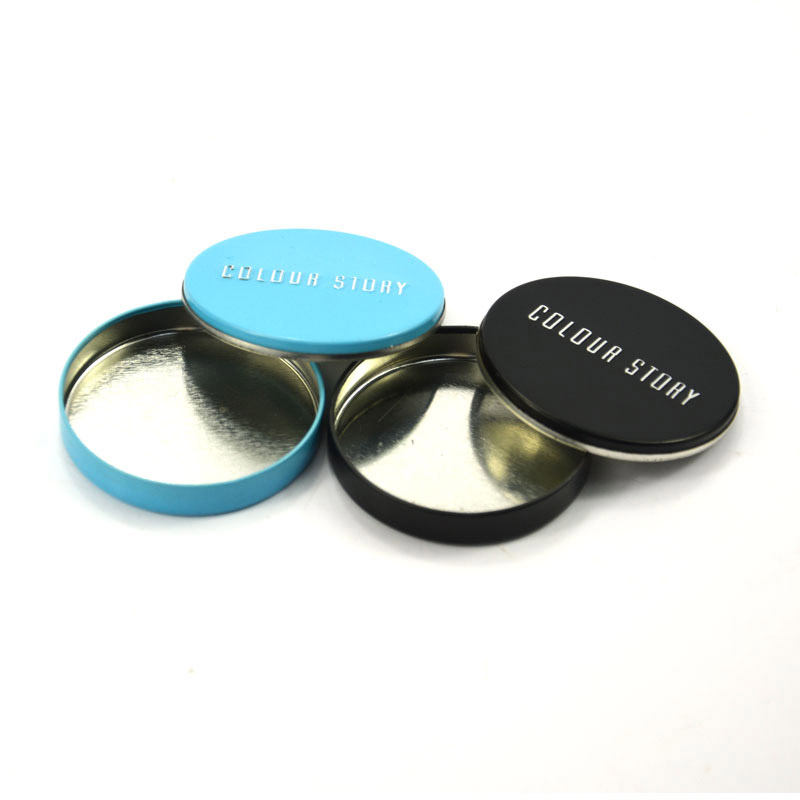
Shallow punching technology of two-piece tin can
Shallow stamping two-piece tin cans adopt a non-thinning punching process to punch flat materials into round, square, oval and other can bodies. Compared with three-piece cans, there are no welds, bottom caps and roll seals, so the production efficiency is higher and the quality risk is lower. The flat color printing pattern with deformed design is more aesthetic after being formed.
Two-piece tin cans VS three-piece tin cans, they have the following advantages.
1. Good airtightness. The can body is directly formed by the punching process, no leakage, and the leak detection process can be avoided.
2. To ensure product quality The two-piece cans do not need to be welded and sealed, which avoids lead contamination of the solder cans, and is resistant to high temperature sterilization, which can ensure product hygiene.
3. Beautiful and generous. The can body has no joints and beautiful appearance. The can body can be continuously decorated and printed with good effect.
4. High production efficiency The two-piece can has only two parts, and the can body manufacturing process is simple, which is beneficial to simplify the process and improve the production efficiency.
5. Saving raw materials. Two-piece cans are stretched and deformed when the can body is formed, and the can wall is thinner than a three-piece can; in addition, the can body of the two-piece can is integrally formed without the longitudinal seam of the can body and the seam with the bottom of the can. Save material.
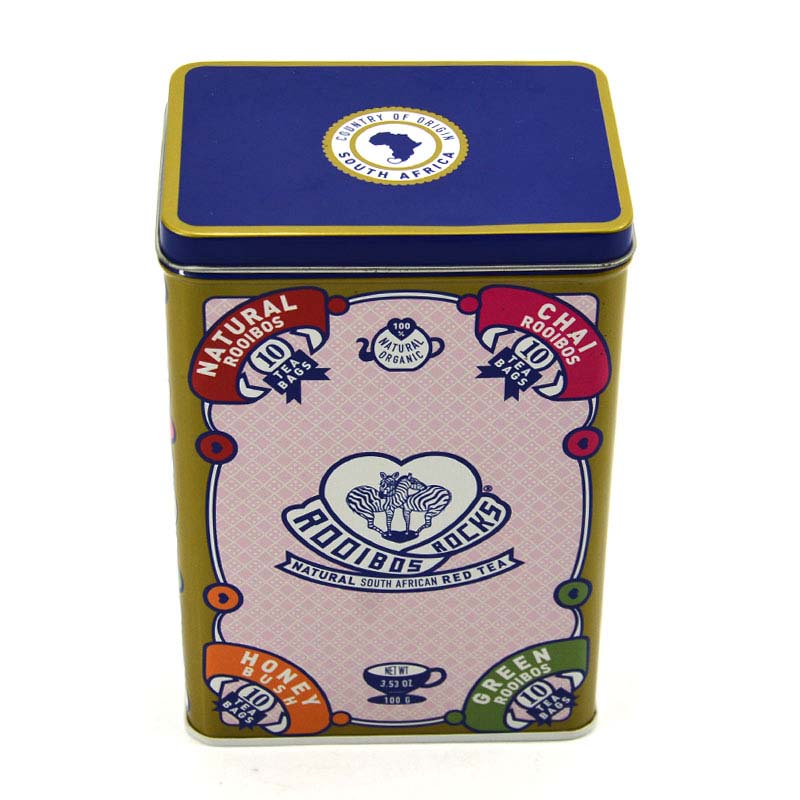
Easy-open lid tin can and easy-to-peel lid tin can
The easy-open lid of a tin can is a lid that is pre-engraved with a certain depth of score line and riveted with a pull ring, which can be safely torn off along the score line when opened.
Easy-open cap is a better anti-counterfeiting bottle cap. Many companies have fully considered the need for anti-counterfeiting before use, so they have adopted a poorly interchangeable design during production. The cover is not universal and has a certain anti-counterfeiting effect. In addition, special equipment is required for use, so there are fewer cases of counterfeiting wine packaged with easy-open lids.
When tin cans with tinned steel sheets or aluminum alloy sheets are used to produce easy-open lid tin cans, a rivet must be punched out, and at the same time, local materials must not be damaged, and the opening nick depth is uniform and easy to open, so the requirements for the thin plate are very strict . The core technology of easy-opening tin can manufacturing is the sealing method. In addition to the common bonding method (using food-grade adhesives), for food cans with negative pressure, or beer cans with positive pressure, roll sealing can be sealed Fastness is better.
Easy Peelable End (EPE)/Peel-off end (POE), compared with Easy Open End and EOE, because the softer aluminum foil or composite film is used as the tearing part, it is easier to tear and safer. It is easy to cut hands, and solves the current situation that canned food is delicious and difficult to open. Therefore, in recent years, easy-to-tear lids have gradually gained popularity at home and abroad.
Tin cans with easy-to-peel lids are generally divided into dry powder easy-to-peel lids and cooking easy-to-peel lids according to application conditions. The application fields include three categories: dry powder foods, such as milk powder, protein powder, rice noodles, powdered health products, etc.; dry products, Such as tea, nuts, chrysanthemum tea, etc.; canned meat foods, such as luncheon meat, fish, eight-treasure porridge, pet food, etc.

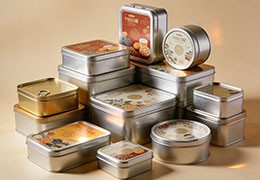
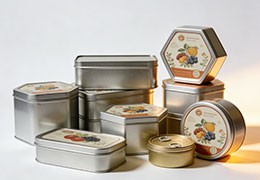
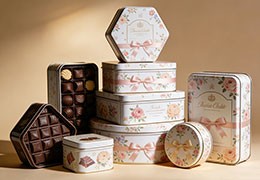
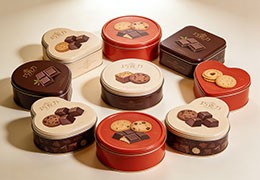
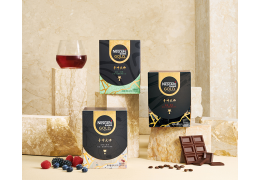
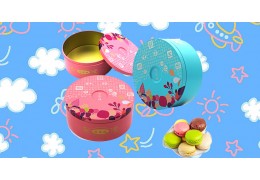
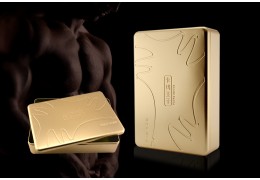
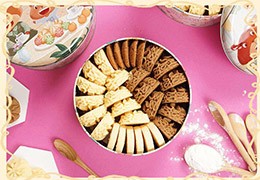
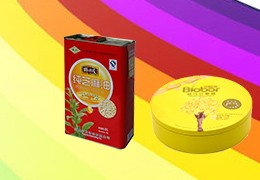

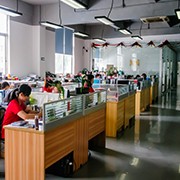

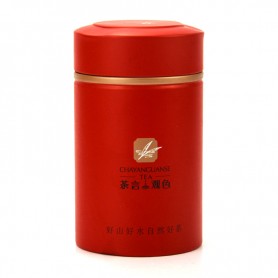
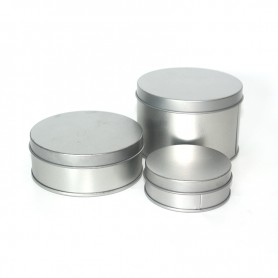
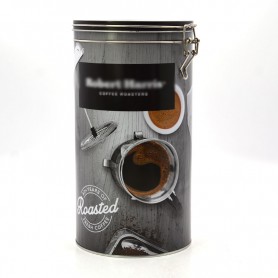


Latest comments